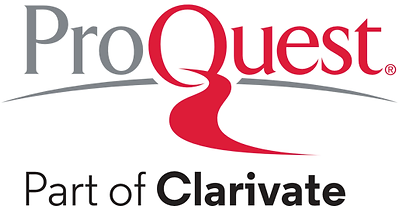Dynamics and Optimization of Physical Processes in Information Systems Using Autonomous Mobile Robots and Multi-Agent Systems
| Authors | Nemala Jayasri1 , Pellakuri Vidyullatha2, , A. Saravanan3, Anil Kumar Muthevi4, K.P. Dinakaran5, Nageswara Rao Medikondu6 |
| Affiliations |
1Research Scholar, Department of Computer Science Engineering, Koneru Lakshmaiah Education Foundation, Vaddeswaram-522302, AP, India 2Department of Computer Science Engineering, Koneru Lakshmaiah Education Foundation, Vaddeswaram-522302, AP, India 3Department of Electronics and Communication Engineering, Jaya Engineering College Chennai 602024, Tamilnadu, India 4Department of Computer Science and Engineering, Aditya University Surampalem-533437, AP, India 5Department of EEE, Panimalar Engineering College, Bangalore Trunk Road, Varadharajapuram, Poonamallee, Chennai-600123, India 6Department of Mechanical Engineering, Koneru Lakshmaiah Education Foundation, Vaddeswaram-522302, AP, India |
| Е-mail | pvidyullatha@kluniversity.in |
| Issue | Volume 17, Year 2025, Number 3 |
| Dates | Received 12 April 2025; revised manuscript received 14 June 2025; published online 27 June 2025 |
| Citation | Nemala Jayasri, Pellakuri Vidyullatha, et al., J. Nano- Electron. Phys. 17 No 3, 03025 (2025) |
| DOI | https://doi.org/10.21272/jnep.17(3).03025 |
| PACS Number(s) | 07.05.Mh, 07.07.Tw |
| Keywords | Autonomous Mobile Robots (AMRs), Multi-agent systems, Path planning, A Algorithm*, Real-time navigation and operational optimization. |
| Annotation |
Optimizing physical processes in information systems is crucial for enhancing the efficiency of autonomous mobile robots (AMRs) and multi-agent systems in dynamic environments. This study presents an advanced path planning and coordination approach that integrates AMRs with multi-agent strategies to improve real-time navigation and task execution. The A* (A-Star) algorithm is employed and enhanced with adaptive heuristic modifications to optimize travel time, energy efficiency, and operational throughput. A dynamic cost function is introduced to adjust path selection based on environmental constraints, obstacle distributions, and real-time system dynamics. Additionally, a multi-agent coordination framework is developed to facilitate seamless interaction among multiple robots, ensuring efficient task allocation and collision-free movement. Simulation results in structured and unstructured environments demonstrate that the proposed methodology significantly reduces travel time, enhances system-wide productivity, and optimizes physical process execution in industrial and service robotics applications. By integrating intelligent heuristic adjustments and adaptive multi-agent coordination, this approach provides a robust solution for real-time autonomous navigation and process optimization in complex, constrained environments. |
|
List of References |
Other articles from this number
1) Electrical and Photoelectrical Properties of ZnFe2O4/InSe Heterojunctions [03001-1-03001-4]2) Design, Fabrication and Measurements of a Single-Layer X-Band Miniaturized Patch Antenna with Metasurface for 0.5U and 1U CubeSat Missions [03002-1-03002-10]
3) Microstructure and Morphological Properties of Granulated Mg3Sb2 Thermoelectric Material [03003-1-03003-7]
4) Green Synthesis of ZnO Nanoparticles Using Leaf Extracts, their Characterization and Antimicrobial Applications [03004-1-03004-10]
5) Design and Performance Improvement of a 3.5 GHz Elliptical Patch Antennafor 5G Sub-6 GHz/WiMAX Applications [03005-1-03005-6]
6) Ellipsometric and Maxwell-Garnett Model Studies of Silicon Nitride-based Bilayer Structures Elaborated by LPCVD [03006-1-03006-5]
7) Design, Fabrication and Measurements of an X-Band Cross-Patch Antenna with Metasurface for Advanced LEO CubeSat Missions [03007-1-03007-12]
8) Nanotechnology Driven Advanced Imaging and Classification of Brain Tumours [03008-1-03008-5]
9) Compact Semicircle CSRR- Loaded Antenna for Triband Applications [03009-1-03009-5]
10) Analysis of Performance Parameter of Hexagonal Coil Structure for Wireless Power Charging in Electric Vehicle [03010-1-03010-5]
11) Design and Analysis of a Notched Super Wide Band Antenna for Wireless Communication [03011-1-03011-5]
12) Reduction of Common-Mode Voltage Using Novel T-Type Multilevel Inverter for EV Application [03012-1-03012-5]
13) A Meta Surface Based Patch Antenna for Wireless Space Craft 5G Communication Systems [03013-1-03013-5]
14) Graphene Nanoribbon Based Asymmetric Tunnel FET for Fast Switching and Low Power Applications [03014-1-03014-5]
15) Massive MIMO Signal Detection Using Cascaded OQRD-PMD Method [03015-1-03015-6]
16) Design of a Compact Vivaldi Antenna for Wearable Tactical Applications [03016-1-03016-4]
17) Low-Profile Tapered Slot Antenna for Wearable Military Applications [03017-1-03017-4]
18) Optimized Dual Coupling PIFA for Low SAR Smartphone and Wearable Applications [03018-1-03018-4]
19) Design of Efficient Miniaturized Printed Monopole Antenna for Short-Range Wireless Applications [03019-1-03019-5]
20) Quantum Computing Approaches to Autonomous Mobile Robots and Multi-Machine Systems: A Perspective on Design Automation [03020-1-03020-6]
21) A Circular CPW Fed Patch Antenna with an L-Shape and Two Semi-Circular Shaped Slots for L, Ku and K-Bands [03021-1-03021-4]
22) DFT Performance Analysis of Graphene Nanoribbon FET with Gate Stack for Low Power Applications [03022-1-03022-5]
23) Forecasting Dielectric Behavior of Nano-Epoxy Materials through AI-based Electronic Properties [03023-1-03023-5]
24) Novel Model for Classifying the Toxicity of Metal Oxide Nanoparticles [03024-1-03024-6]
25) Automated Classification of Carbon Nanomaterial Structures based on Computer Vision Model [03026-1-03026-6]
26) Dynamic Optimization of Non-Equilibrium Processes in Nanostructures for High-Performance Applications [03027-1-03027-5]
27) Radiation-Induced Processes in Commercially Available Samples of Activated Carbon Under the Influence of Gamma- and Beta-Radioactivity [03028-1-03028-8]
28) Enhancing Concentrated Solar Photovoltaic (CSPV) Efficiency through Co-Doped ZnO Window Layers and Bi-As Infused GaSb Substrates [03029-1-03029-9]
29) Theoretical and Experimental Study of a Human Inner Ear Implant with an Ultrasonic Communication Line [03030-1-03030-7]
30) Thermoresistive Properties of Graphite Films [03031-1-03031-4]
31) Percolation Behavior of Electrical Conductivity of Polylactic Acid-Based Nanocomposites [03032-1-03032-6]
32) Structural and Optical Properties of Polystyrene CdS Nanocomposite Prepared by a Soft Chemistry Method [03033-1-03033-5]
33) Influence of Pulsed Current Parameters on the Structure Formation of Amorphous Co-W Alloys and their Thermal Stability [03034-1-03034-5]
34) First-Principles Calculation Investigations of Bandgap Bowing Parameters, Electronic and Optical Properties of Cd1 – xZnxTe, Cd1 – xZnxSe and Cd1 – xZnxS Semiconductors Alloys [03035-1-03035-7]
35) Reconfigurable Truncated E-Shape Electromagnetic Gap-Coupled Antenna with Air Gap and Switch Configurations for Wideband Wireless Applications [03036-1-03036-6]
36) Recovering Data for Free Induction Decay Signal for MRI Reconstruction with Interpolation [03037-1-03037-6]
37) Novel Hybrid Approaches for Occupancy Prediction Using Temperature, Light and CO2 Level Supporting Electrical Energy Management [03038-1-03038-6]






